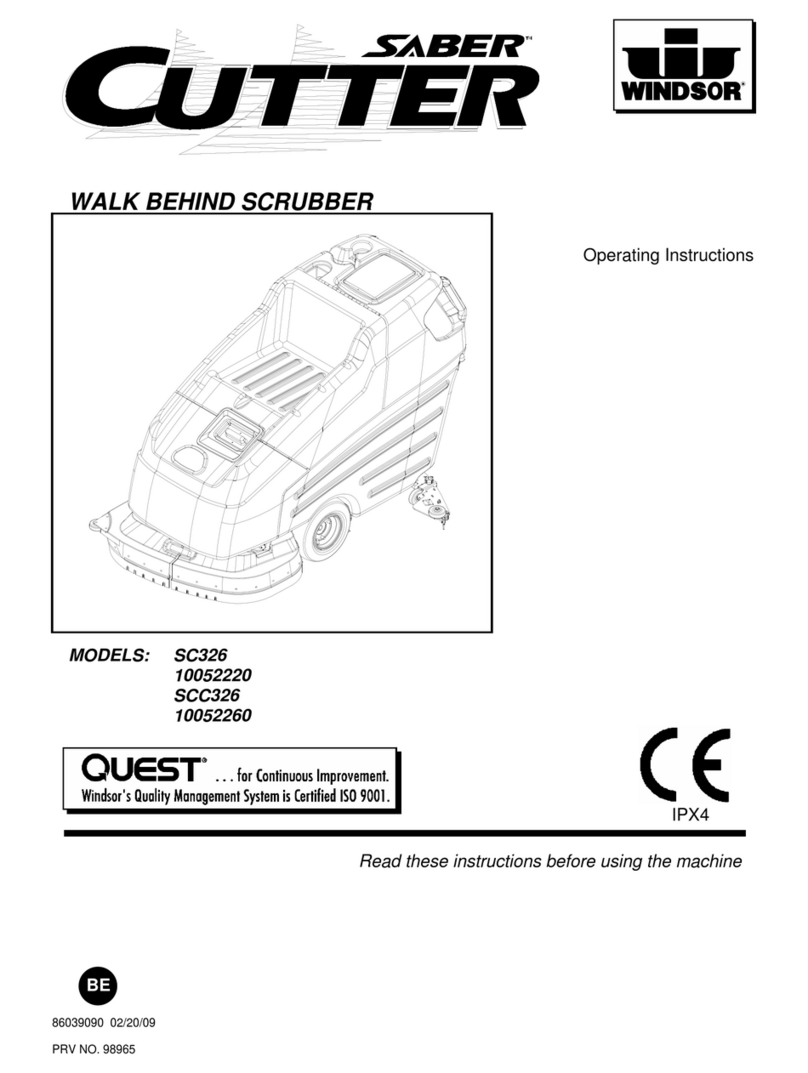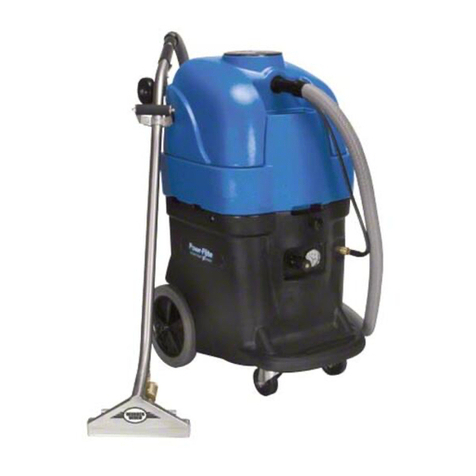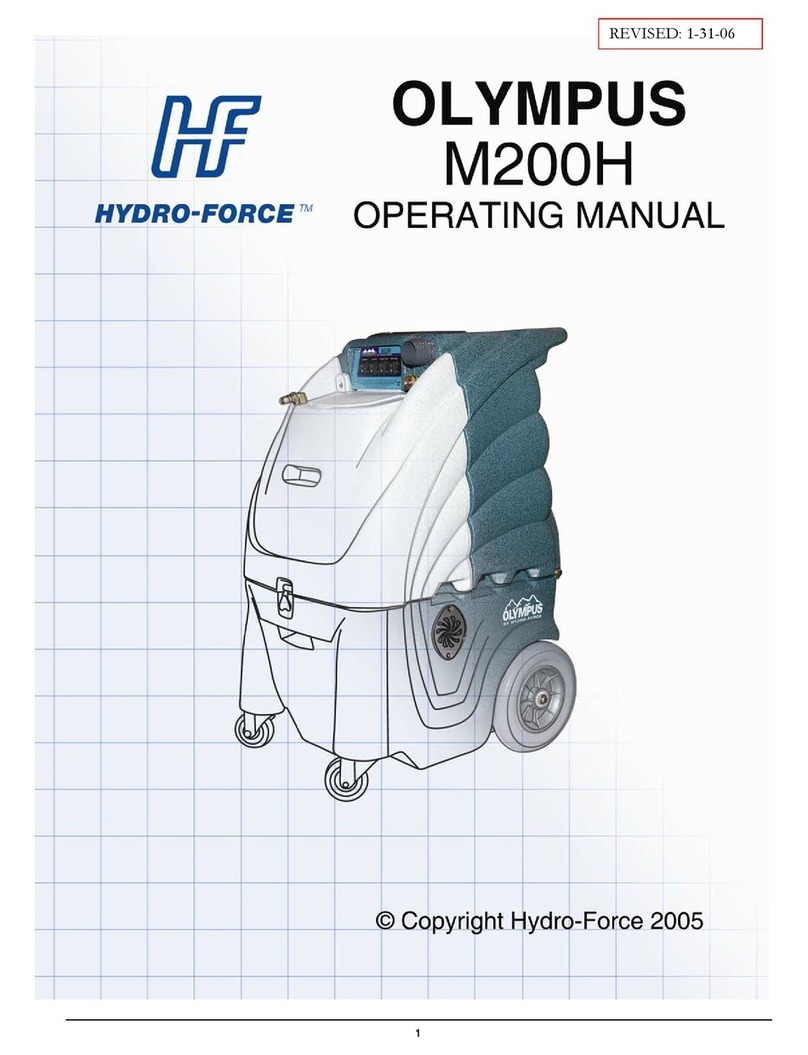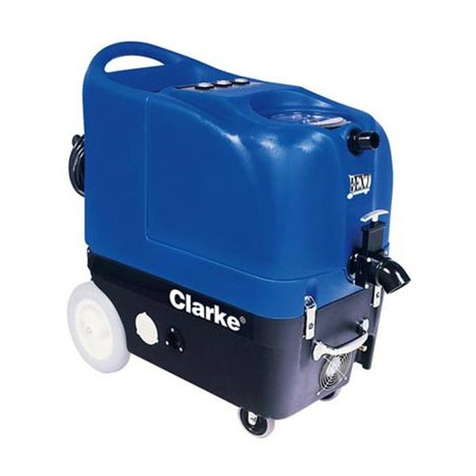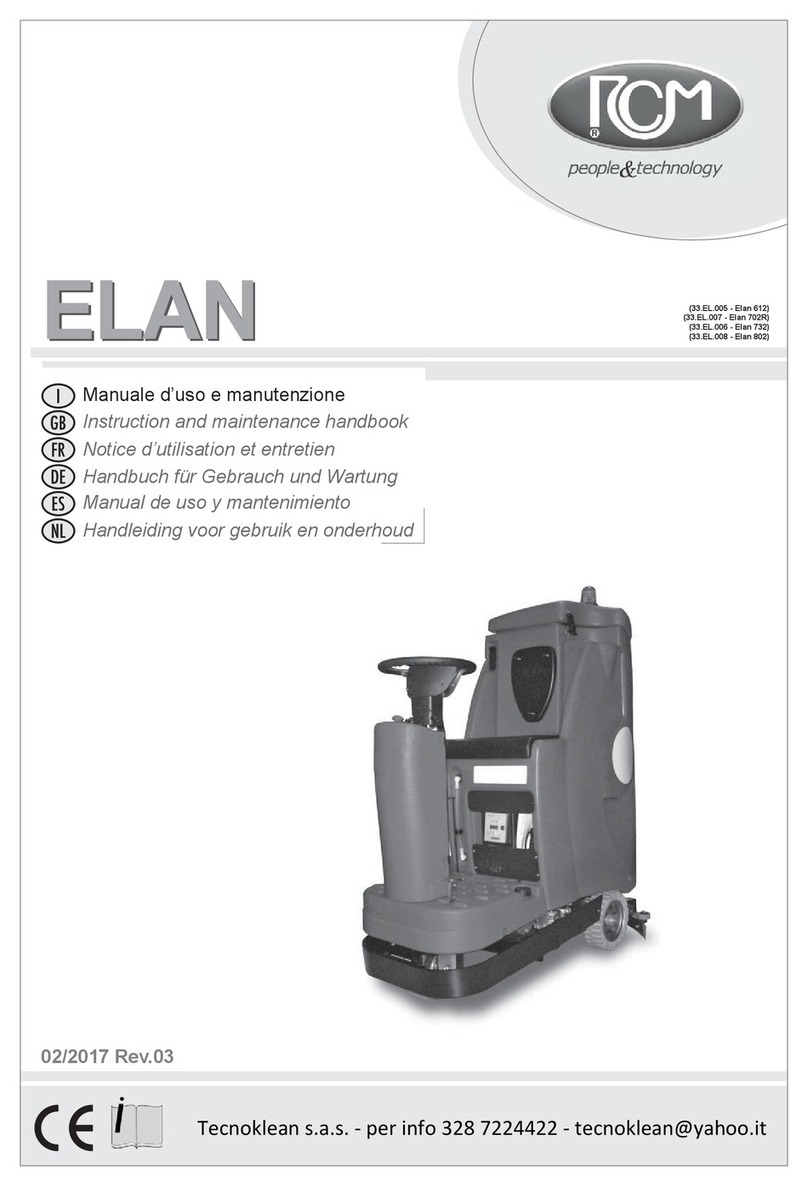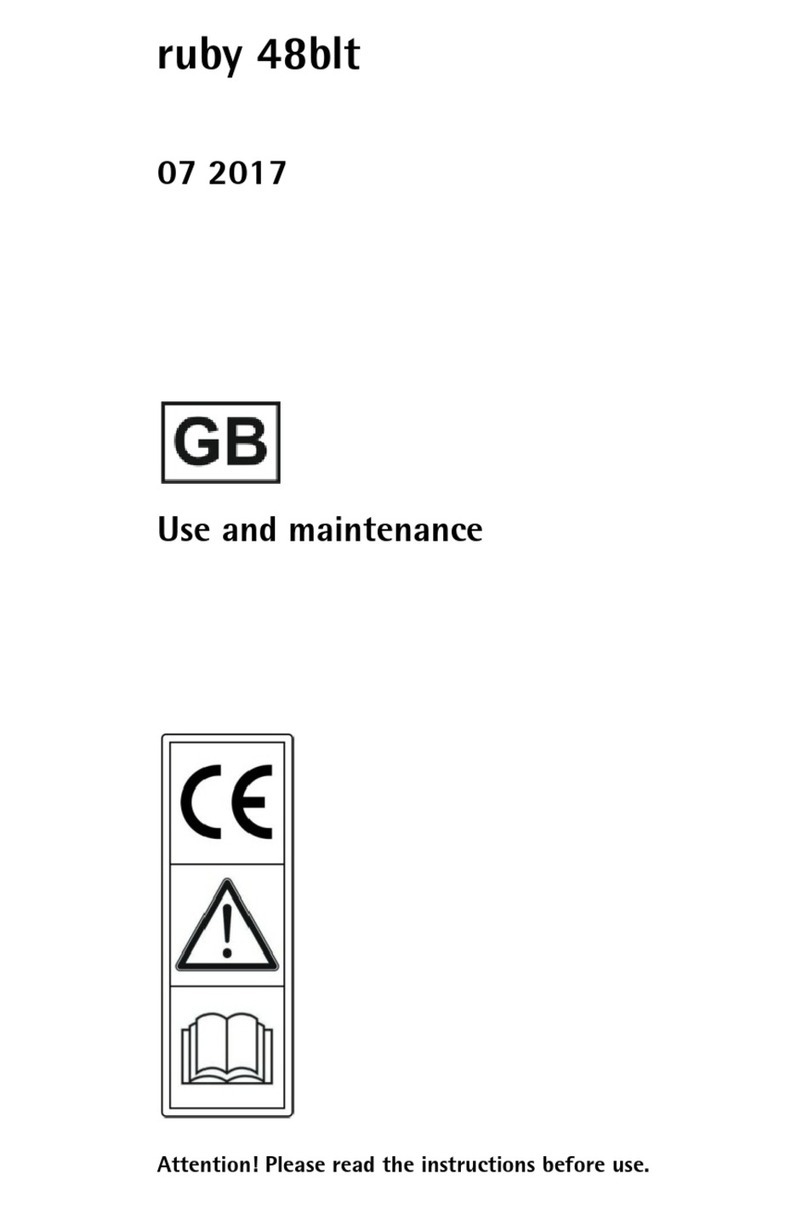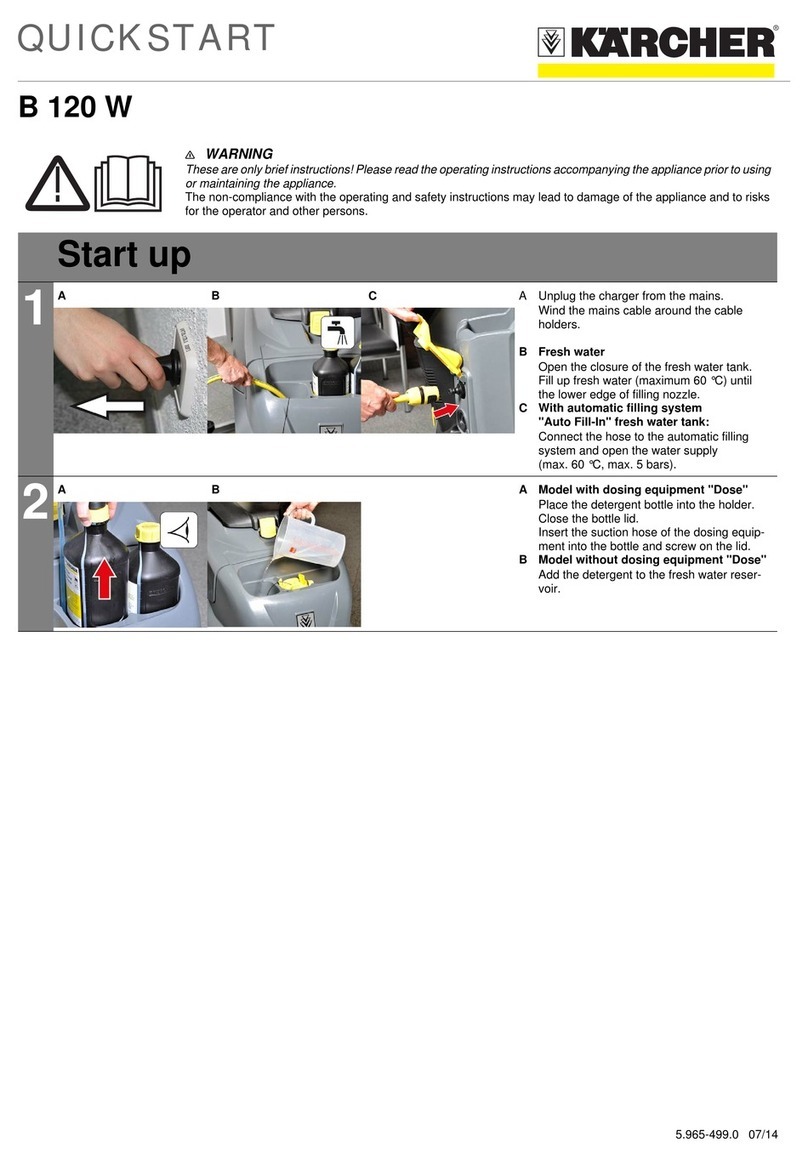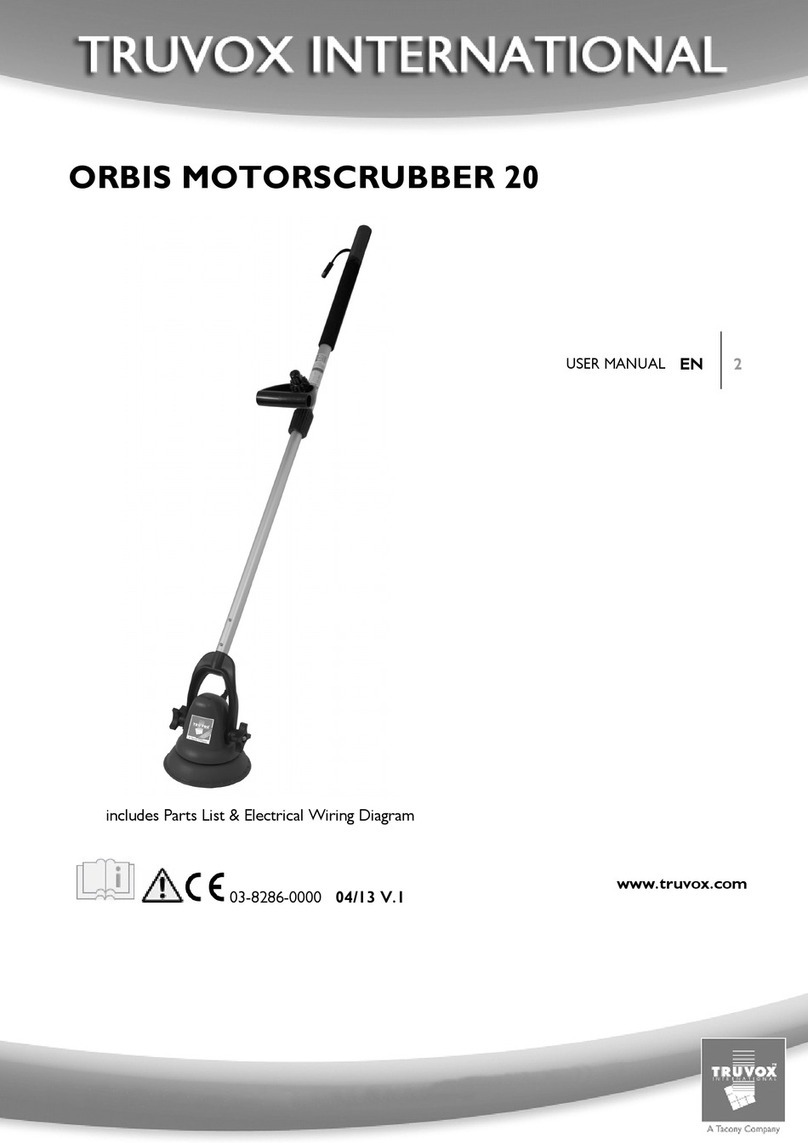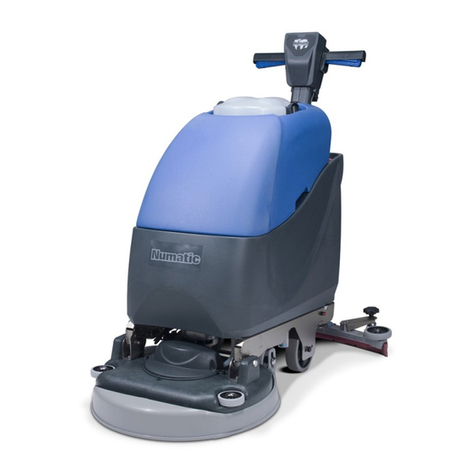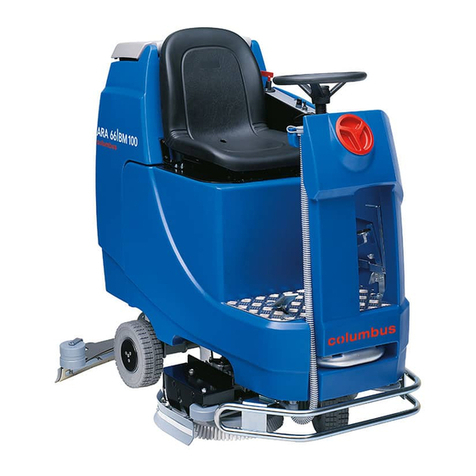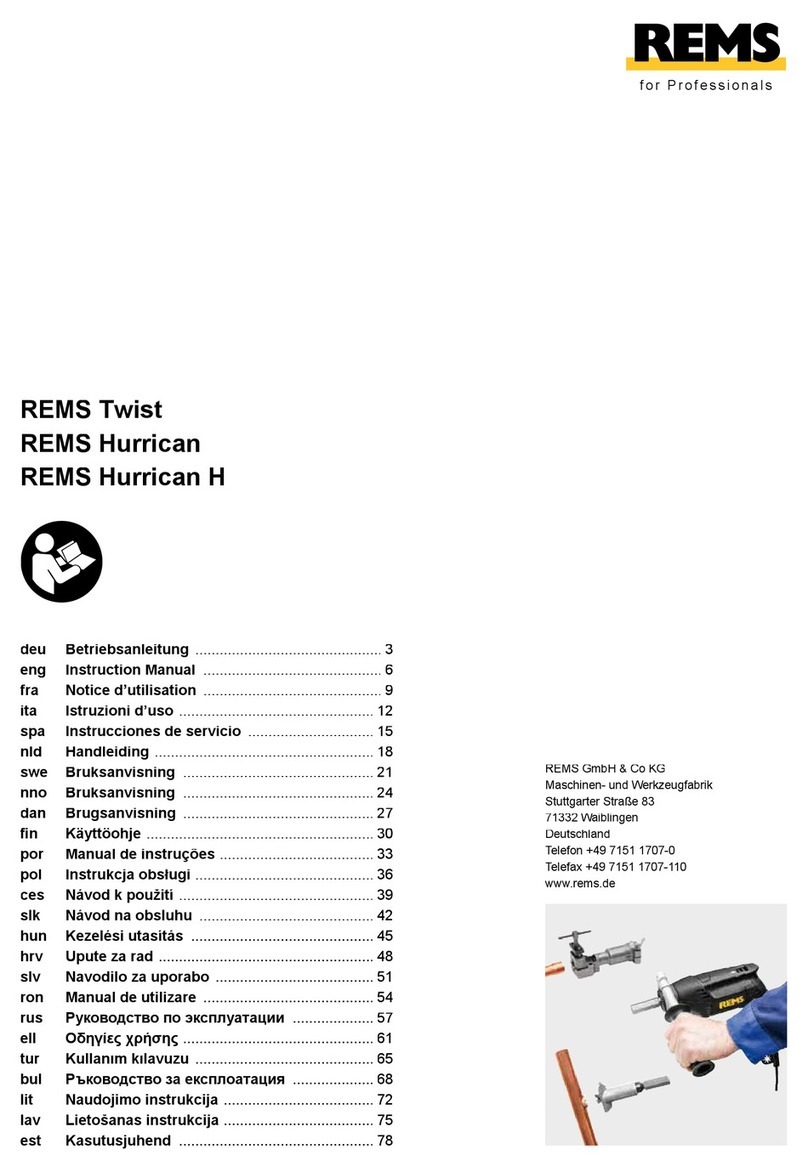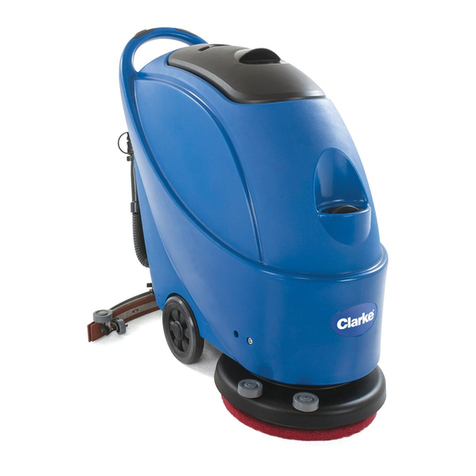Eagle Solutions, ©2008, Tracker Operator Manual Page #7
Machine Handling:Eagle machines should
never be turned on the carburetor side.This can
causeoiltodrainintothecarburetorand/ortheair
lter and result in oil smoke and increased toxic
emissionswhentheengineisrestarted.Alwaystip
themachineover,ifnecessary,withthecarburetor
on thetopside.
EmissionsShutDownSystems:Propaneengine
fuel systems can be tted with safety devices
and shut-off valves that function automatically
if the emissions become too high or a fuel line
is ruptured.If your machine is equipped with a
shut down device, do not attempt to circumvent
or disconnect it. If you receive a warning of high
emissions,checktheairltersforexcessdustoroil
contamination.Ifneitheroftheseconditionsexist,
havethe machinecheckedbyanauthorizedservice
technician.Donotcontinuetooperatethemachine!
Machinesttedwithelectronic emissions controls
needawarm-upperiodofapproximately12to15
minutesto effectivelydissapateemissions,soitis
recommended the engine be started outside and
allowedtowarmupbeforebringingitinside.
OtherAreas for Safety with Propane
Propane Fuel Cylinders:The National Fire
Protection Association (NFPA) has established
standardsforthestorageandhandlingofliqueed
petroleum gases.This standard is NFPA58 and
is recognized in the United States and Canada as
wellassomeother countries.For other countries
theownermustassurethattherequiredregulations
aremet.
The fuel cylinder supplied with this machine is
aD.O.T.4E240motorfuelcylinder.Cylindersnot
brandedwithD.O.T.4E240onthetopcollarshould
neverbeusedonpropanepoweredequipment.Never
useacylinderfromagasbarbecue,forexample,on
thismachine.Thecapacityofthe4E240cylinder
is20 lbs.,80%ofthetotalliquidcapacity.Never
allow a fuel cylinder to be overlled.Have the
cylinder lled at a reputable propane dealer and
checkitforoverllbeforeacceptingit.
OPD:The supplied cylinder is also tted with
an overll protection device (OPD) that prevents
overllingofapropanecylinder.
Cylinder Filling:Before having a cylinder
relledexaminethecylinderfordamage,including
dents, bulges or cracks on the container surface,
rusting,particularlyonthebottomofthecylinder,
missing cylinder foot ring, collar or valve cover,
manufacture or recertication date, and OPD
valve.Thesearethingsthatcanrenderthecylinder
unusableanddangerous.Cylindersareonlyusable
for12yearsfromthedateofmanufactureandmust
berecertiedevery5years.
Checking a Cylinder for Overll:Always
wear frost proof gloves and a face shield before
attemptingtocheckfuelcylinderforoverll.
1. Take to a safe area outside, away from open
amesandcigarettes.
2. Open the xed liquid level gauge (bleeder
valve).
3. Observethe gasexitingfromthevalve:white
cloud = OVERFILLED; no cloud visible =
SAFE!
4. Ifoverlled,allowtoventuntilvaporisclear.
Do not attempt to repair a damaged propane
cylinder yourself.Return the cylinder to your
propanevendorforauthorizedservice.
Cylinder Storage & Transportation:Propane
fuel cylinders, whether full or empty, should
be stored OUTSIDE the building in a secure,
approved cylinder storage cabinet in accordance
with NFPA58.Do not store cylinders near other
ammableorcombustiblematerials.Thepropane
fuelcylindersthatEaglemachinesusearevertical
cylindersandshouldalwaysremaininthevertical
position, even when being transported or stored.
This position assures the pressure relief valve
and other ttings are in direct contact with the
vaporinthe cylinder andnotthe liquid. Keepthe
safety relief valve pointed away from anything
that escaping propane could come in contact with
possiblycausingareoraccident.Removecylinder
from machine when not in use.Local authorities
mayhaveadditionalrequirementsforfuelcylinder
storage.Alwaysconsultwiththelocalremarshal
forlocalcodes.
NFPA58 Chapter 5 addresses the storage
of portable containers.This standard says,
“Containersinstorageshallbelocatedtominimize
exposure to excessive temperature rise, physical
damage,ortampering.”NFPA585-3detailswhat
isallowedto bestoredinbuildings frequentedby
thepublic.NOTE:Onlycylinderswithamaximum
LP-Gas capacity of no more than 16.8 ounces
shall be permitted to be stored or displayed in
buildingsfrequentlybythepublic.Eaglemachines
use a 20 POUND capacity cylinder and are not
allowed to be stored in buildings frequented by
ToOrderPartsCall1-888-702-5326-https://monsterfloorequipmentparts.com
